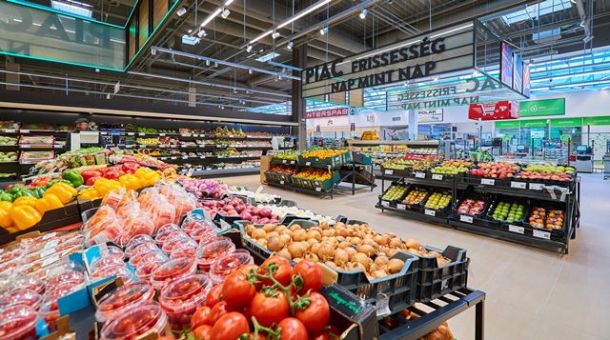Tesco will have to raise prices to meet its margin target, says GlobalData
Tesco, a British multinational grocery and general merchandise retailer, announced that it has kept shelf-edge inflation 1% below its competitors for the 26 weeks to 28 August 2017, but it cannot hope to maintain this gap and simultaneously reach its ambitious 3,5% to 4%-margin target and £1,5bn cost-savings ambition by the 2019/2020 financial year.
There are a number of factors that challenge the idea that Tesco can remain as competitive on prices through to 2020 and achieve 3,5% to 4% operating margin. Assuming 3% year-on-year sales growth out to the 2019/2020 financial year for the group, to achieve its margin target, the £1,5bn cost-savings target cannot be reinvested into price.
Being able to reach the cost-savings target is a challenge in itself given that it will require a circa 33% improvement in profitability for the 2017/2018 financial year. Given that the first half of the 2017/2018 financial year saw a 27,3% improvement in profitability, there needs to be a step up in operating profit growth in during the second half of the year to meet just this year’s target. For the 2018/2019 and 2019/2020 financial years, assuming that the cost savings are evenly spread across the three years, operating profit growth needs to be 25% and 20% respectively. Operating profit needs to reach £2,55bn on total group sales of £61,2bn (the margin target is based on group revenue including fuel excluding VAT) by the end of 2019/2020 financial year to achieve a 4% margin.
“Many cost-saving procedures and efficiencies have already been implemented across the group. Tesco remains confident in its ability to meet its cost-savings targets, and we believe that it can reach its £1,5bn cost-saving aim and thus reach the bottom end (3,5%) of the margin target. However, if this is the case, maintaining the 1% price gap that we have seen for the period will not be possible, which it has highlighted as a key volume driver.
“Tesco’s ability to maintain its price competitiveness will be challenged by cost inflation, which will continue through to 2019, and shelf-edge inflation, which will reach a peak of 2.9% in H1 2019. Using our price tracker, we have seen that Tesco raised its prices circa 2% during H1 2017/18, and we estimate that they are, therefore, absorbing circa 1% of cost inflation. At the moment, this ability to absorb cost inflation comes from the volume benefits that it has gained from suppliers,” says GlobalData.
Tesco has consolidated many of its suppliers, both to be more UK focused and to be more efficient, with >100% volume increase from 95 suppliers and between 10% to 50% increases from 1 083 suppliers. As a result, large-scale cost increases have come from volume benefits through consolidation. However, the moves to consolidate range, develop new products and grow its core own-label range will have had the greatest impact this year. Therefore, the benefit is unlikely to continue in magnitude through to the 2019/2020 financial year.
“The ability to keep prices 1% lower than competitors has come from reinvesting this scale benefit back into prices, helping Tesco avoid using any cost savings needed to reach the £1,5bn target to keep prices low. Although volume benefits will come through footfall as well as supplier consolidation, we still see the scale of savings to reinvest to fall over the three years to the 2019/2020 financial year. Therefore, extra cost savings will have to come from somewhere, or inflation will have to subside sooner than 2019.
“We do not see the latter happening without a very favourable Brexit outcome, and the former would require operating profit to improve more than circa 30% year-on-year, which would be exceptionally difficult given the scale of change already happening for Tesco. As a result, we predict that Tesco’s prices will begin to increase towards 2019 as volume benefits from its supplier negotiations start to dissipate,” GlobalData concludes.
News Category
- International retailers
- On the move
- Awards and achievements
- Legislation
- Wine and liquor
- Africa
- Going green
- Supplier news
- Research tools
- Retailer trading results
- Supply chain
- Innovation and technology
- Economic factors
- Crime and security
- Store Openings
- Marketing and Promotions
- Social Responsibility
- Brand Press Office
Related Articles

Spar reports growth of 3.3% as global retail sa...

Informal Retail in Africa: Could Technology be ...

Consumers need a good reason to shop this Black...

Checkers launches deals onto its Sixty60 home d...


